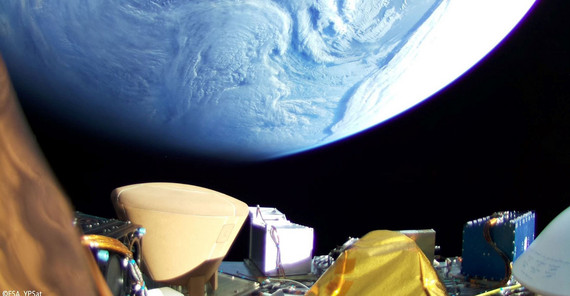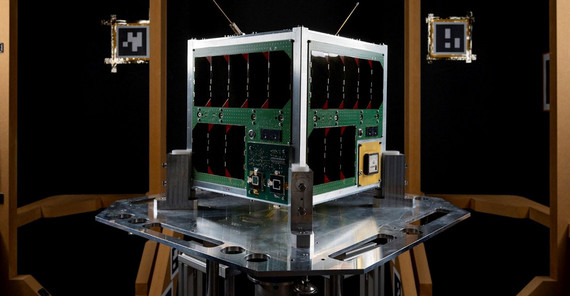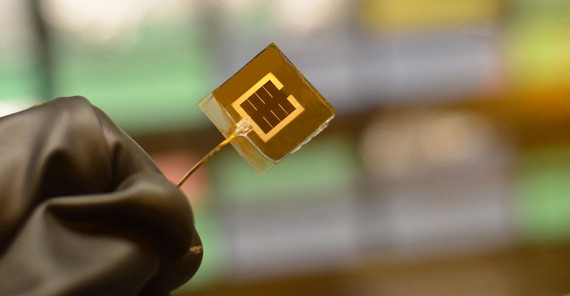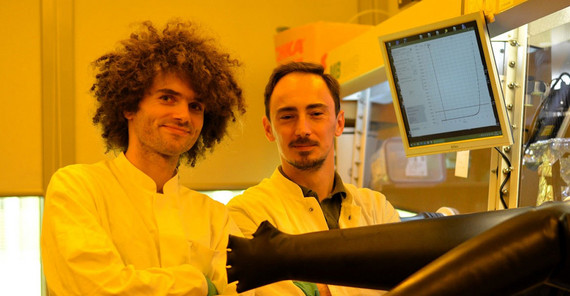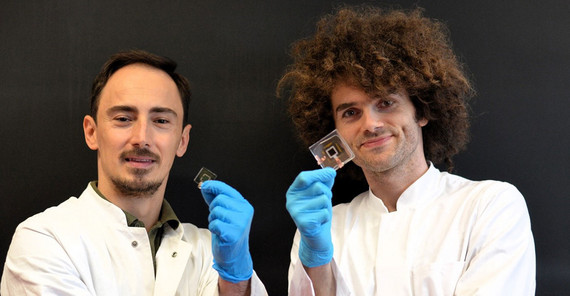July 9, 2024 was an exciting day for Felix Lang and his team from the University of Potsdam: It was the maiden launch of the new Ariane 6 rocket from Guiana Space Centre by ESA. On-board a satellite with one of his solar cell experiments. The satellite itself was successfully released one hour and six minutes after launch. “The solar cells have survived launch and started to produce energy, even without perfect alignment to the sun,” says Felix Lang, who celebrates this first success with his junior research group at the chair of Prof. Dr. Dieter Neher, funded by a Freigeist-Fellowship of the Volkswagen Foundation.
The solar cells on board are Perovskite/CIGS (copper indium gallium selenide) and Perovskite/Silicon Tandem Solar Cells, where the perovskite absorbs the blue-green parts of the sunlight, and the CIGS or Silicon absorbs the red-infrared parts. “This trick enables highest power conversion efficiencies, which is needed to power future satellites, space stations, or spacecraft,” explains Felix Lang. “We will now investigate the performance over the next years to understand the stability and degradation of our tandem solar cells in space.”
For this challenging endeavor, Felix Lang and his Ph.D. student Sercan Özen worked together with L. Zimmerman from Prof. S. Albrecht’s group at Helmholtz-Zentrum Berlin (HZB), G. Farias/Dr. I. Kafedjiska from Dr. C. Kaufmann’s Team at the Competence Centre Photovoltaics (PVComB), and R. Kothandaraman from Dr. F. Fu’s group from the Swiss Federal Laboratories for Materials Science and Technology (Empa). The satellite itself is an On-Orbit Verification Cube (OOV-Cube) focused on technology demonstration, which was developed at the Chair of Prof. E. Stoll of the Technical University of Berlin together with Dr. W. Frese from Rapid Cubes GmbH.
If successful, the mission’s outcome would be an important step forward for using perovskite solar cells to generate energy in space. Felix Lang and his team now focus on investigating the reliability of perovskite single and tandem solar cells in space, starting with the harsh radiation environment to extreme temperature cycles. “We hope that perovskites, which are rather soft semiconductors, can self-heal after potential damage and thereby outperform traditional technologies,” he concludes.
Further information: https://www.uni-potsdam.de/en/pwm/rosi-group
Image 1: View from the Ariane 6 by YPSat on Earth and the launch container of OOV-Cube after successful release of OOV-Cube. Image Credit: ESA/YPSat
Image 2: OOV-Cube with the Perovskite Tandem Solar Cell experiment by Felix Lang from University of Potsdam. Image Credit: Jon A. Juárez
Image 3: Tandem Solar Cell in the Laboratory. Image Credit: Felix Lang
Image 4: Sercan Özen and Felix Lang testing Perovskite Tandem Solar Cells for their satellite experiment. Image Credit: Felix Lang
Image 5: Sercan Özen and Felix Lang with Perovskite Tandem Solar Cells. Image Credit: Felix Lang
Contact:
Dr. Felix Lang, Institute of Physics and Astronomy
Tel.: +49 331 977-5630
Mail: felix.lang.1uuni-potsdampde
Medieninformation 14-10-2024 / Nr. 097

